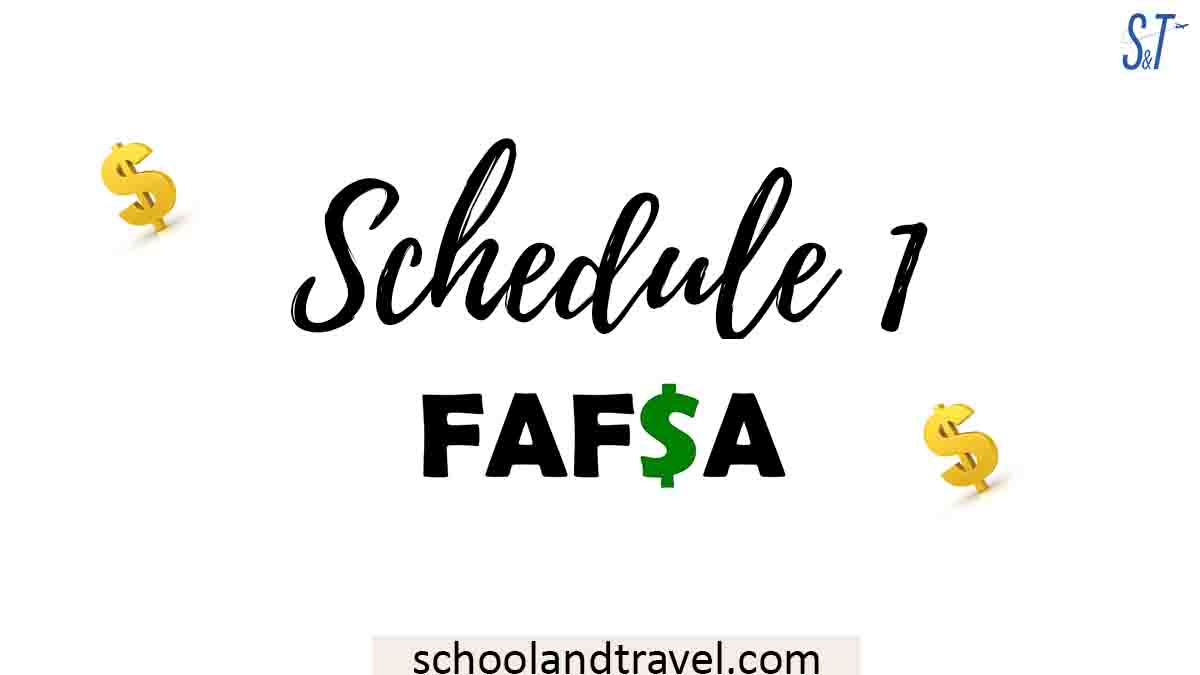Many students every year go into school without knowing how they can actually complete their educational program. A brief research has shown that this could be down to mostly financial troubles rather than psychological, which led to the introduction of Schedule 1 FAFSA.
FAFSA, which stands for “Free Application for Federal Student Aid”, is a form completed by current and prospective college students (undergraduate and graduate) in the United States to determine their eligibility for student financial aid.
FAFSA can be in no way compared to the CSS Profile, which is also required by some colleges, mostly privately owned ones.
The CSS is a fee-based product of the College Board, a private non-profit organization. The colleges usually use it to distribute their own institutional funding rather than federal or state funding.
However, there has been some criticism of FAFSA not being user friendly, which has been laid to rest by the U.S Department of education and which work is being done to make it more user-friendly.
FAFSA can be an immense form for those trying it for the first time, invariably, it can be completed using a tax return that’s already been filed, and the IRS Data Retrieval Tool allows families to link directly to their tax return to save time.
However, not all sections of FAFSA can be directly gotten from IRS; one of such sections is called “Schedule 1 FAFSA“.
Let’s quickly get through what is schedule 1, where you can get it and tips on what to fill in your FAFSA report.
What is Schedule 1 FAFSA?
Schedule 1 is used to report types of income that aren’t listed on 1040; some of these incomes may include; capital gains, alimony, unemployment payments, gambling winnings, etc.
Schedule 1 also includes some common adjustments to income, like the student loan interest deduction and deductions for educator expenses.
While completing their federal income taxes, families will need to file a Schedule 1 if they report earnings other than those listed on their 1040.
This comes in addition to 1040, which also lists forms of income, including salary, wages, tips, and more.
Where can I find my Schedule 1?
Schedule 1 is found after the 1040 and it comes before any other schedules the family filed for the given tax year.
The FAFSA currently asks whether or not a family has completed a Schedule 1, which is of paramount importance; thus, Parents can select three options:
- Yes
- No
- Don’t know
Read this: USC vs UCLA – Which College is BETTER? (Full Ultimate details)
Tips On What To Fill In The Schedule 1 FAFSA Form
Select “Yes” if your parents filed or will file a Schedule 1 to report additional income or any adjustments in income except for a change in any of the six exceptions listed below:
- Unemployment compensation
- Other income
- Capital gain or loss
- IRA deduction
- Student loan interest deduction
- Educator expenses
Select “No” if your parents didn’t and won’t file a Schedule 1.
More tips on Schedule 1 FAFSA
Select “No” if your parents filed or will file a Schedule 1 but only to report one or more of the following six changes in income.
- Unemployment compensation
- Other income
- Capital gain or loss
- IRA deduction
- Student loan interest deduction
- Educator expenses
If your parents don’t know if they filed or will file a Schedule 1, select “Don’t know.”
Conclusion:
The schedule 1 FAFSA is an important part of the FAFSA application; hence the right information must be filled in to make the process less immense.
This article should help you know what to fill and in case you get confused and don’t know what to fill, then ensure you select “Don’t know,” in any state of confusion so that the school you are applying to may reach out to help clarify the answer.
Read this: Grant vs Scholarship – Here’s the killer difference
The school will likely either have your tax return through the Data Retrieval process or when you submit the return electronically to the school through a portal like the IDOC.
Thanks for reading this article on Schedule 1 FAFSA.
Sources:
Awesome one, I hope this article answered your question.


